Editor's Note
This story was originally published in Issue Five, The Nostalgia Issue, of Life & Thyme’s printed publication. To order a copy, visit our online shop.
“This was the ‘60s, darling,” Adele laughs. “We didn’t call much.” Adele and Ira Yellin first met in springtime in New York, and right away, she knew she had met her match.
There was something special about Ira. She knew it then, and she knows it now as she recalls the first time she met her husband that April. Adele was a freshman at the all-girls boarding school, Emma Willard, in Troy in Upstate New York, and Ira was her cousin’s roommate in his senior year at Princeton in New Jersey.
Throughout their studies, the two would write each other letters, penning their goings-on back and forth and building a long courtship as the seasons passed. After meeting for this first time, Adele didn’t see Ira again until June. And for a long while, they could only see each other intermittently. “I saw him again in September. I saw him again at Christmas. And then we wouldn’t see each other for six months, but we’d write,” Adele says. Adele was allowed to leave campus one weekend each term in boarding school, so she would visit Ira while he was attending Harvard Law School. And over holiday, Ira would spend time with Adele and her family visiting Florida. The rare spare time they had, they would spend together.
“He was very intellectual. He was very handsome,” Adele describes Ira, becoming teary-eyed and melancholy. But a smile quickly breaks across her face as her eyes light up. “He was very tiny, but buff and a charmer. We just had a lot of fun,” she can’t help but laugh. “From the beginning, it was like we were connected.”
When Adele went to pursue an art history degree at UCLA, however, she wanted to spend some time for herself. “We didn’t see each other a lot, and then when I went to college. I wasn’t interested and I was going to focus on [school]. But after about two years, nobody at college was anything like Ira,” Adele pauses. “Nobody.”
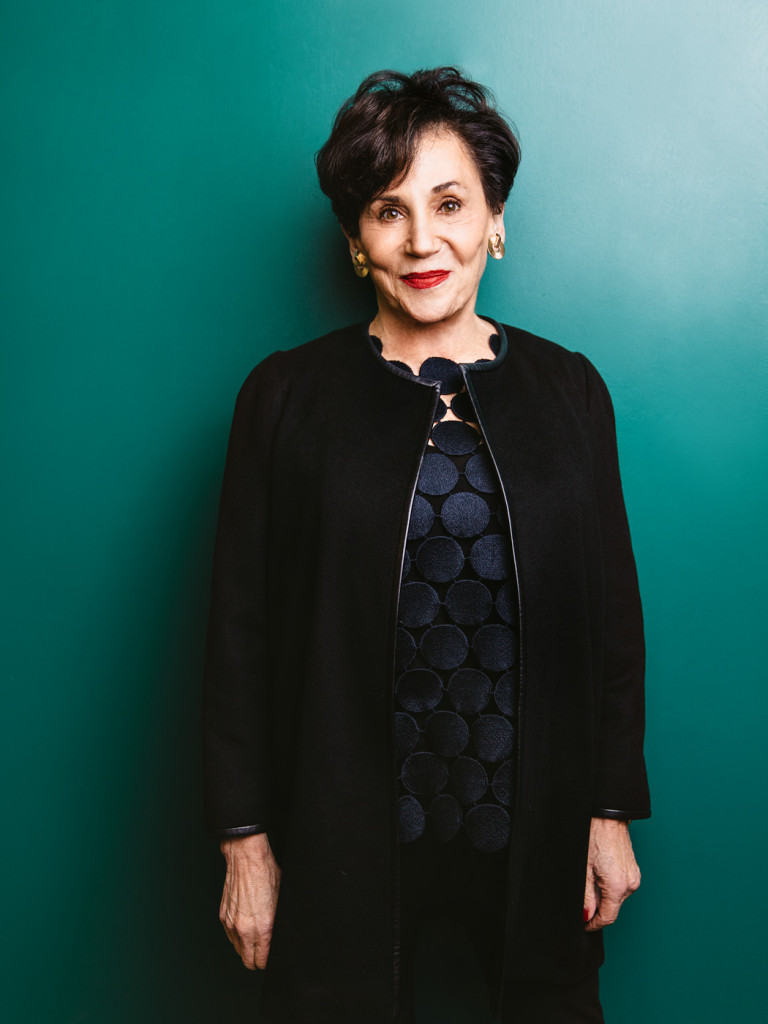
_____
Today, Adele sits as president of the Yellin Company, known for the ownership and development of the mixed-use properties of Grand Central Square, which includes the Million Dollar Theater, offices in the Lyon Building, residential apartments and the historic Grand Central Market. And Adele is the woman steering the vision behind the market’s culinary and economic revival in the epicenter of Downtown Los Angeles.
This part of the city still feels like a secret more and more people are becoming privy to. Even a few years ago, you’d be hard-pressed to find someone to accompany you to the area without some serious persuasion—let alone 30 years ago. With the dilapidation of the historic Broadway Theater District, it wasn’t exactly a place to spend more time in than you were obligated to. Downtown L.A. was an intimidating goliath, sitting aloof amidst the 101 and 110 freeways.
Nowadays, Downtown is a culinary and creative destination, largely in part to the Yellins’ vision for the city they love. With places like the Broad Museum opening across from the famed Walt Disney Concert Hall and bringing countless art enthusiasts to South Grand Avenue, Ace Hotel opening—along with a bar and renovated theater—on South Broadway creating a destination for millennials to drink and enjoy a view that spans the structural landscape from the center of our city, and Grand Central Market being an incubator for culinary entrepreneurialism, Downtown L.A. is as vibrant as ever.
Although Grand Central Market originally opened in 1917—now entering its 99th year of operation—it has seen countless iterations of Downtown’s culture. It has seen its rise in its golden age in the 1920s, its slow decline following WWII and the following decades, its redevelopment in the late 1950s and ‘60s, another economic slump and following attempt at revitalization, and where it currently stands. The market has seen it all. And without Adele’s bold curation of a space that melds all cultures with entrepreneurial, unique, culinary endeavors—that also have clean, distinct design—others locally might not have followed suit in recent years. Adele has a vision for her market; she has a vision for her city.
Grand Central Market as we know it today began its course in 1984 when Ira purchased the property—he also went on to own the architecturally iconic Bradbury Building and the Million Dollar Theater, along with leading Union Station’s restoration. But Grand Central Market really began to take shape in 2012 when Adele took over The Yellin Company. So to fully grasp the story of Grand Central Market, you need to know the story of the Yellins.
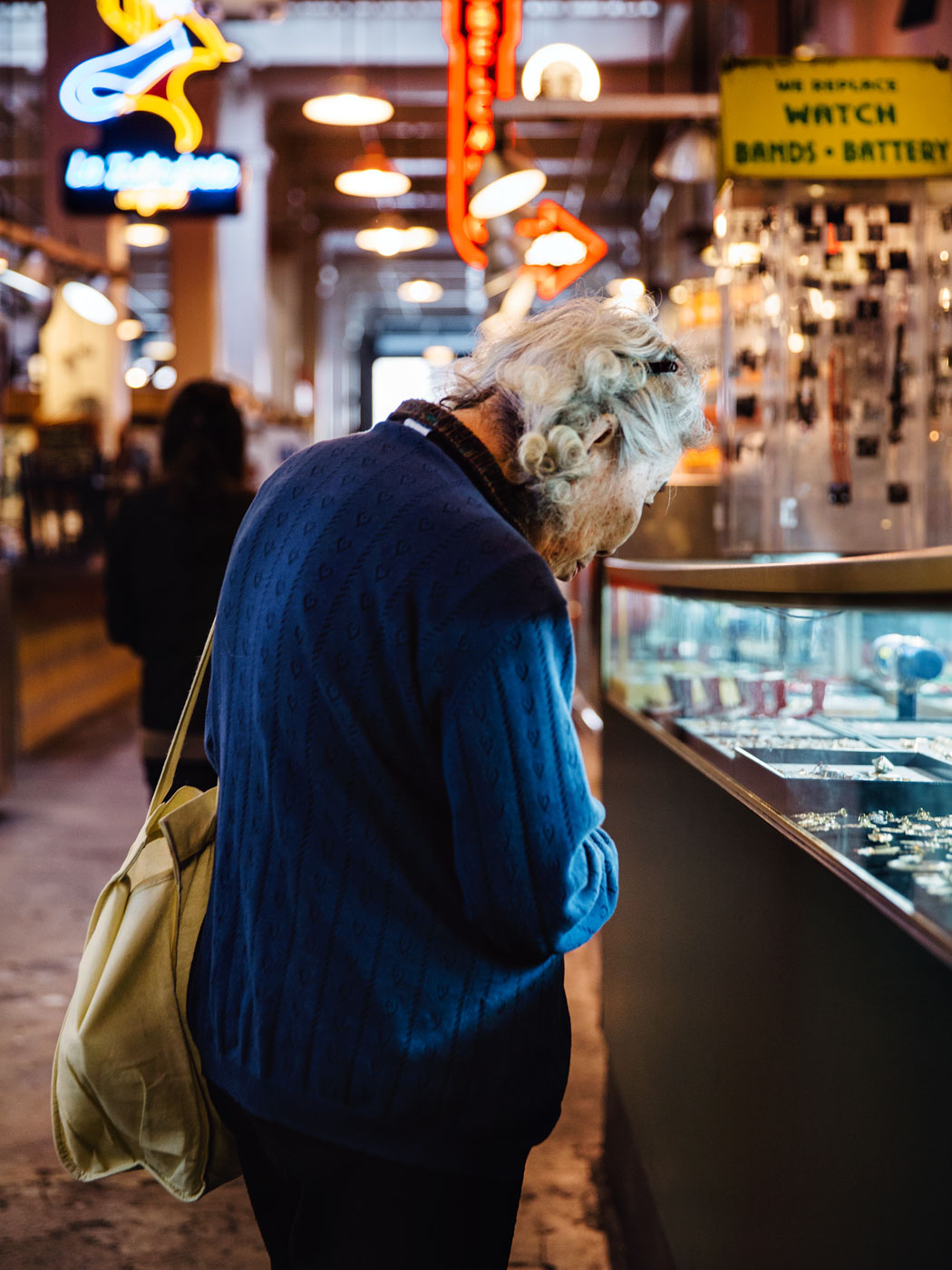
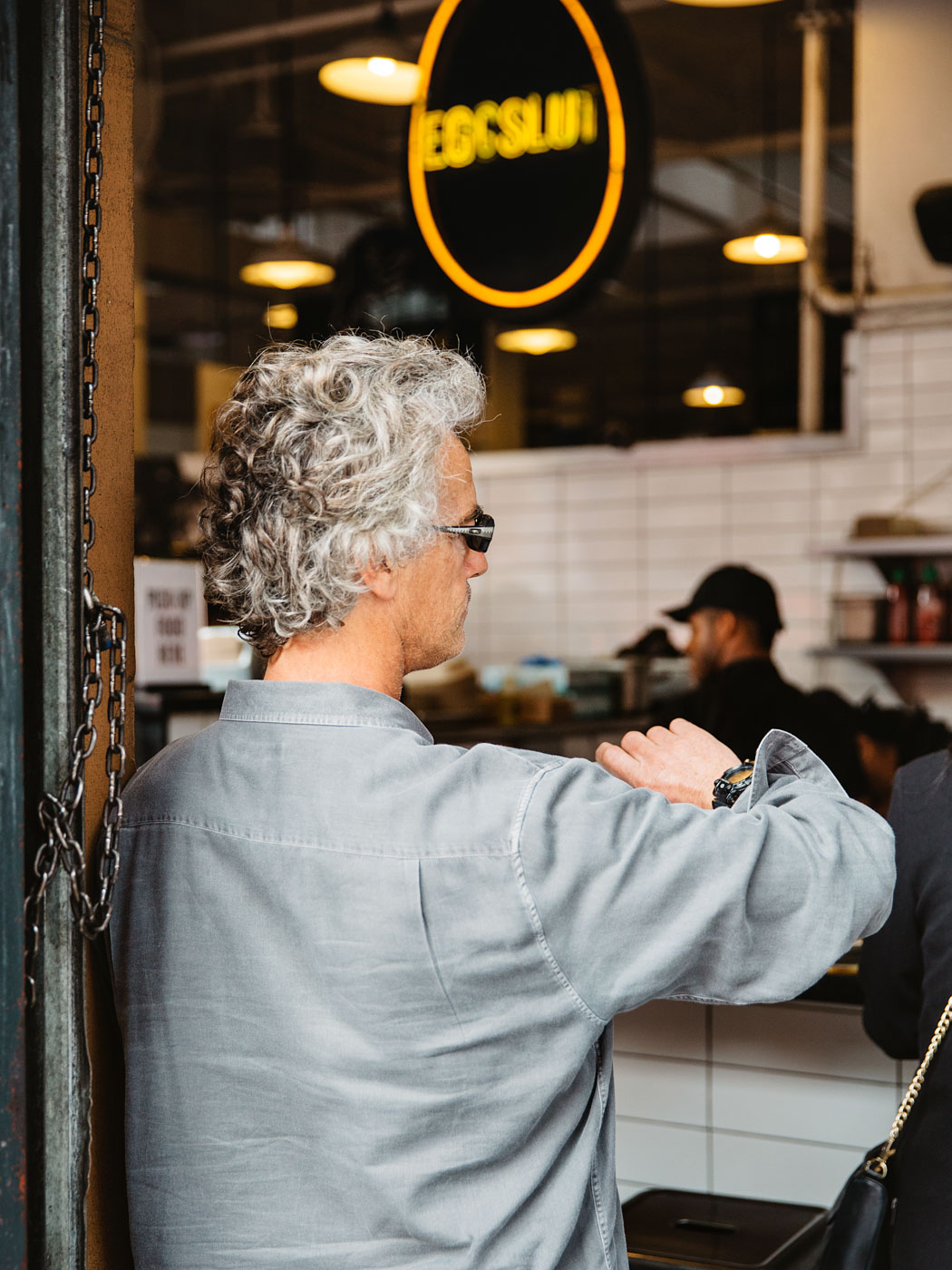
_____
Adele and I meet on the Hill Street-side of the market on a cloudy, mid-January Monday. I order a coffee, black, at the white marbled counter at G&B, where you order like you’re at a bar.
There are several places like the award-winning G&B within the market—places at the forefront of whatever culinary-related field they are in; places that start here like a seed, and grow. Originally starting as a pop-up inside Silver Lake’s Sqirl, Adele gave G&B’s founders, Kyle Glanville and Charles Babinski, a chance to set up a proper shop.
Adele walks up to me at the counter. She’s classically fashionable, wearing all black, bold gold earrings, and red lipstick; this woman knows taste. We introduce ourselves and she orders a cappuccino. “L’chaim,” she says as she toasts me, our glasses briefly touching together. To life.
As we walk through the crowded halls where Adele greets various vendors and patrons by name, I can’t help but imagine how different this place would be if she wasn’t involved. She later tells me of the time she and Ira were apart—nearly two years, a blink in the span of their relationship—when Adele was first attending college, and that, well, she missed him. Ira was back in Southern California after graduating from Berkeley in 1966—although born in Boston, he was raised in Los Angeles. That July, he had joined the Marine Corps Reserve for six months before beginning work at a law firm the following January. During this time, Adele had been living in the dorms at UCLA, and had spent a semester at University of Southern California. But at the end of her sophomore year, she decided to spend the summer with Ira. And by the end of that summer, they were engaged to be married.
Ira and Adele were married in March of 1968; she was almost 21, and he was 27. I imagine if they had never returned to each other. I imagine how different this city would be.
Their first apartment together in Los Angeles was in The Andalusia in West Hollywood. It was a charming, 1920s Spanish-style courtyard apartment listed on the National Register of Historic Places. Ivy and pink bougainvillea creep up its white adobe walls before reaching the red-tiled roof. “From the beginning, architecture was a part of our everyday lives,” says Adele.
That’s clear as we make our way through the market, thick with tangible energy. People are here to grab lunch, but also to gather. There’s a sense of community unlike anywhere else in Los Angeles. Adele tells me of replacing a meat purveyor with Belcampo Meat Co. On its first day of business they sold a goat’s head. “They couldn’t believe it. They had never sold a goat’s head,” she says. “They sell everything. You can’t get that everywhere. They get this cross-section of people.” Different cultures are coming to this market looking for different things. And while you might be looking for high-end, grass-fed, conventional cuts of local beef, others can also find more unconventional cuts of meat at the same place. The entire animal will be sold.
Adele and I walk past Sticky Rice, which she has a fondness for. They were the first vendor to take a chance on her during Grand Central Market’s reformation in 2012. In her office in the Bradbury Building, a whiteboard lists the market’s restaurants in order of their opening, with a special section marked for legacy vendors—those who were there before the changeover. Sticky Rice is listed at the top.
We walk past the winding line for Alvin Cailan’s Eggslut. I’ve been to the market many times, and the line seems to only grow with each visit. We walk past La Tostadería where a neon mermaid glows over tile and plates made in Mexico adorning seafood. We head over to Tacos Tumbras a Tomas where they make fresh salsa for you if you request, and then over to Knead & Co. Pasta Bar + Market, a stand where you can buy fresh pasta from Chef Bruce Kalman. There are countless culinary ventures. Each is unique, each has a line, and each is a celebration of culture. And you’ll be hard-pressed to find a seat.
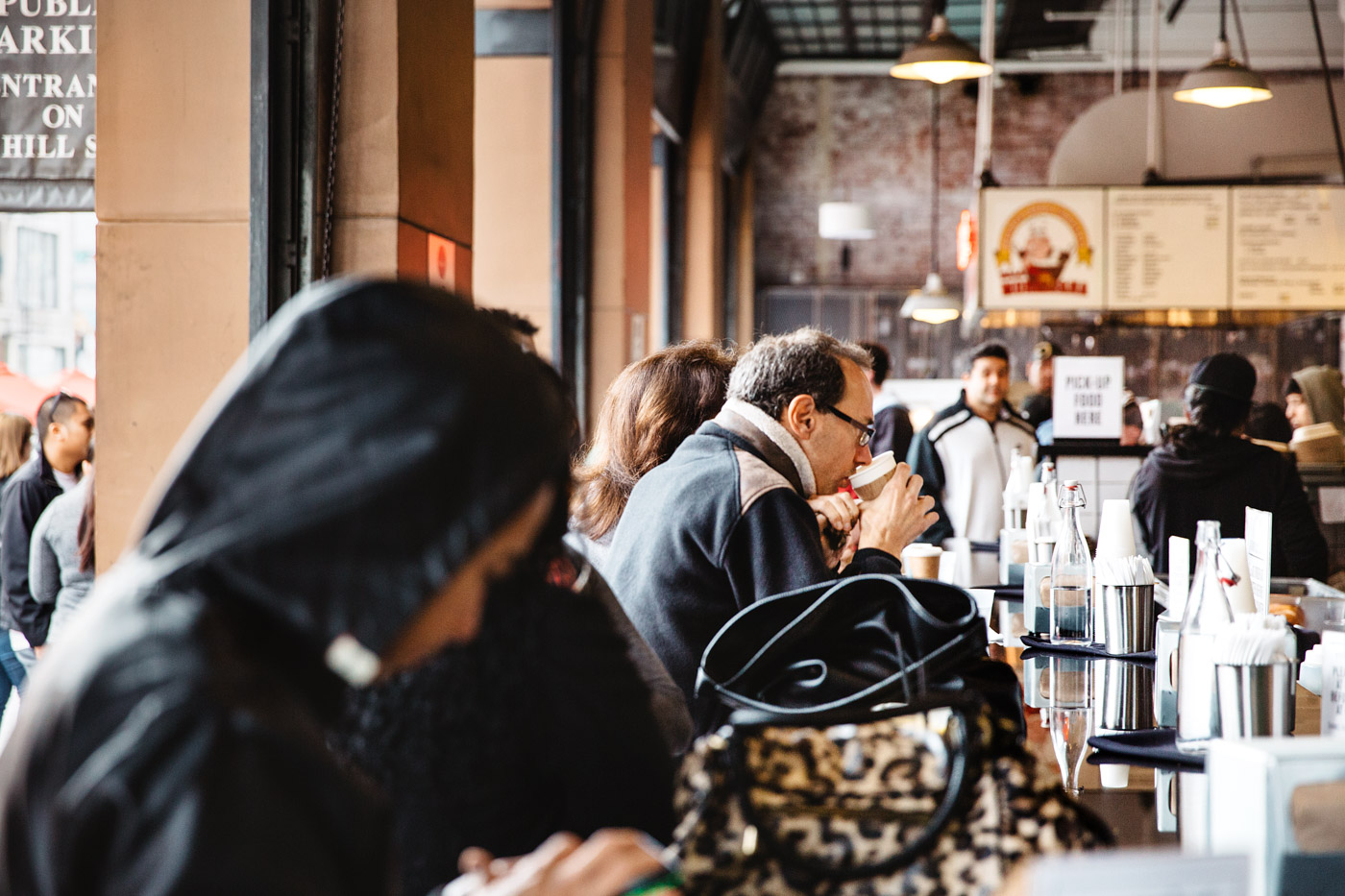
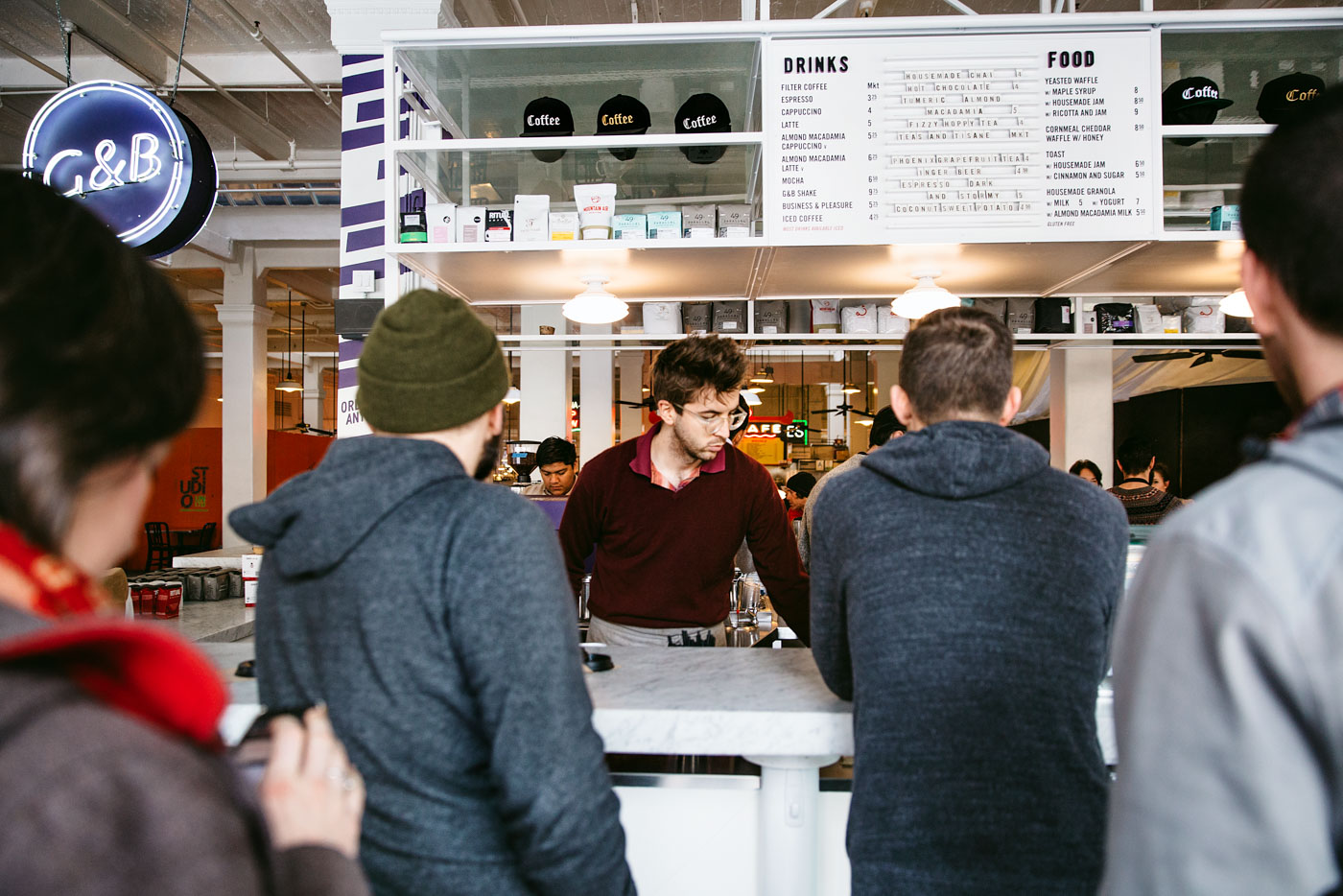
_____
“We had a dramatic relationship, I can tell you that,” Adele laughs. She laughs often when talking about her husband. “We have two wonderful children. We were both activists. Both of us loved politics. Both of us loved our city and thought our city could do so many things.” While Ira spent his time as a lawyer at the Rosenfeld, Meyer & Sussman firm until 1974, then running Bill Norris’ political campaign, and eventually working for developer Fred Nicholas until 1984, Adele was involved in various healthcare, children and women-related causes—she participated in a feminist march with her then-7-year-old daughter—and raising her children throughout the 1970s (she still fights for women’s rights and has served on the board for the Rape Treatment Center at Santa Monica Hospital for over 30 years. She also used to be co-chair of—and still participates in—the Women’s Political Committee). The Yellins were raising a family and developing their dreams for the historic core of Angeles—angels in a city of ruin.
In the 1980s, Adele was also spending her time as an interior decorator—where she mostly did residential housing—hence her eye for design so distinct to the Downtown L.A. aesthetic. In the 1990s, Ira followed his passion for urban planning and formed Urban Partners while also becoming head of the American Jewish Committee, Los Angeles Chapter. The pair dedicated most of their time to serving the community they loved so deeply.
“We used to talk about everything we did here,” Adele says of her marriage. “But all of the things I’ve done in my life have contributed to what I’m able to do now. It’s like everything you do makes a difference. I worked on the board and built a building for the Westside Children’s Center, so I know how to deal with contractors and the city and kitchens. I was a decorator. And you also have to deal with the political side of things. Downtown is a very political environment.”
“You just learn and you take everything you’ve got, and you just keep going. Sometimes you don’t know what you’re doing. Like, many times,” she laughs. “But you just have to put one foot in front of the other.”
Unfortunately, Ira passed away in 2002 at the age of 62 after battling lung cancer, and Adele was at his side. “When Ira died, he left this business to me,” she says, regarding The Yellin Company. “At the beginning, it was devastating that he died and I let the people who were running [Grand Central Market] continue to run it,” Adele says. She was in mourning. And with Ira’s passing, the market fell into a slump.
“The composition of Downtown was changing, and the offerings we had at the market were available at a lot of other places. And also, the demographic of the Latino community was changing. A lot people who were immigrants, their kids were growing up and wanted more hip things too,” she says. “We couldn’t put a lot of money into the market because it wasn’t making a lot of money. So little by little, it started to deteriorate.”
“Then the people who were working here wanted to retire, so I stepped in,” she continues. It was time to help see her husband’s vision for Grand Central Market—and for Downtown Los Angeles—to its potential.
She then hired Joseph Shuldiner (Altadena Farmers Market, Institute of Domestic Technology) and Kevin West (the former editor of W Magazine) to help curate and refine the culinary atmosphere. “They knew my daughter-in-law. We were having trouble finding someone to advise us on which chefs to go to,” she says. “There were conflicting sentiments on how to do it.” So, albeit a bit unconventionally, Adele sent West a message on Facebook.
Adele’s idea for the market was to have unique offerings and chef-driven concepts, and she wanted to integrate that with the legacy tenants they have. So the group worked together with Adele at the helm to develop a locally-focused, design-forward, culinary destination in the midst of the dying heart of the city nearing its last beat.
“The first one was Sticky Rice, and the rest is history,” she says. Legacy vendors, such as Ana Maria, Grand Central Market Discount Store, China Café and Sarita’s Pupuseria remain, but all vendors follow a similar ethos that contributes to the betterment of the city at large—most of which centers on the concept of taste. Whether family owned and operated, or a cutting-edge concept-driven culinary expedition, Grand Central Market zeros in on those who have something to say, and are leading the pack by opening business. It’s come far from the days of 2012 and its 40-percent occupancy rate. Grand Central Market is now a place to look to for trends. It’s a place to look to for quality. And it’s a place to look to to see a responsible kitchen. As you walk around the market, each kitchen is an open one. There’s a literal transparency there that doesn’t go unnoticed.
Four years later, the market doesn’t have much of a vacancy problem any longer. When you walk in the Hill Street side you see construction going on for Golden Road Brewery and Bar Moruno, both of which will surely draw a population in the evening hours. Adele firmly believes in the benefit of promoting local entrepreneurship. She tells me, “It helps Downtown. It helps the whole city.” And Grand Central Market has therefore been monumental and at the core of helping Downtown Los Angeles’ economic and cultural revival.
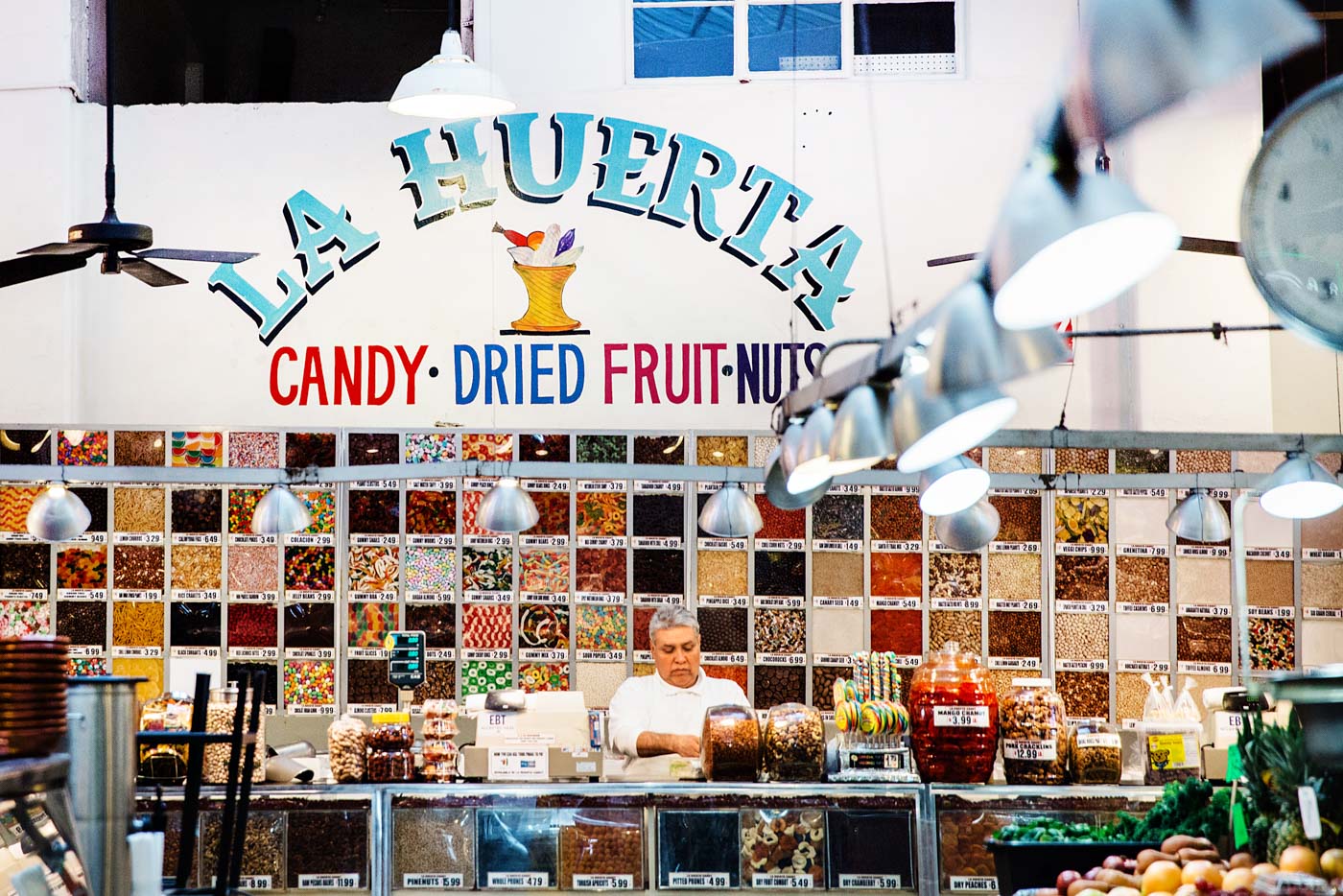
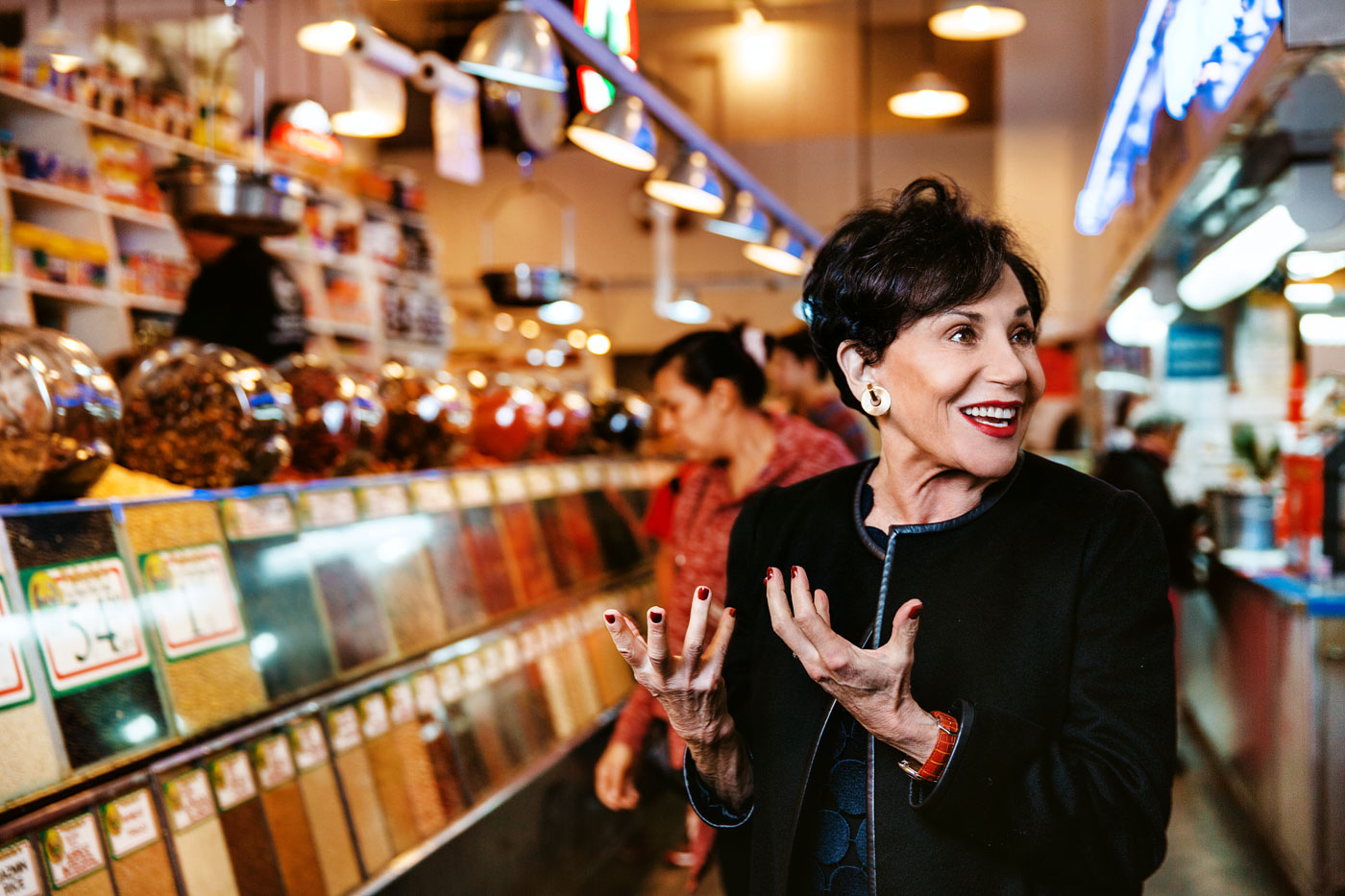
_____
In 1984, Ira envisioned a bustling urban market in the heart of metropolis. He saw a place for all ethnicities and socioeconomic backgrounds to gather. He saw a place for locally-owned businesses to thrive. Thirty-two years later, Adele is carrying on her husband’s prophecy.
“He loved the market, but he felt the city itself was deteriorating and that you have to reinvest in your inner city in order for the whole city to not deteriorate,” she says. Ira had written about this concept while attending UC Berkeley from 1965-66—although he was pursuing a master’s in law at the time, he spent most of the year working in the urban planning division. “Many cities in the United States in the ‘60s were deteriorating from the inside out. The experience after World War II in Europe is if you reinvested in those inner cities, everything grew out of that. It just expanded and stimulated more growth and more commerce,” explains Adele. Like a pebble in a pond, the first impact creates a ripple that moves further and further outward.
“When he bought [Grand Central Market] it was a struggle because he was the first one doing it. It was the myth of Sisyphus,” says Adele. “Ira was visionary and very persistent. Ira never gave up. And people listened to him, even though they disagreed all the time. He somehow had this capacity to make people understand what he was trying to do.”
“He saw what could really be,” she tells me of her husband. “You can’t just listen to everybody who’s saying Downtown will never be any good or there’s no way it can resurrect itself. He just believed it could be.” And it’s happening. Although Ira had a commitment to his vision that began in 1984, the momentum for Downtown L.A.’s revival didn’t gather until recently.
Early in the 20th century, Angelenos residing in Victorian homes perched on Bunker Hill west of the market would take the then-running Angel’s Flight down to the market, walking through the halls and picking up produce and goods. But in 1984, much of Broadway was left uninhabited. “[Ira] saw that empty office buildings here on Broadway could be converted into apartments. He was the first one to do that in the ‘90s,” Adele tells me. “And after that there was this transformation. That’s what started the whole change in the population. There weren’t many people living downtown at all. When that started to happen, it was just exploding.”
“I’ve always wanted to keep Ira’s legacy going. We were very similar in what we thought about in terms of creativity. I was the foodie. There was something very unique about him,” she says, softly. “And I’ve just been able to complete what he started. That’s why I’ve been lucky.” Ira is clearly still with Adele as she speaks of him in her office. She’s doing everything she can to maintain his vision, while also implementing her own. And her commitment to her marriage to this day is enviable. Yes, she was married to Ira. But in a way, she’s also married to Los Angeles. She is wholeheartedly, irrevocably, an Angeleno.
Adele is also involved in the fight to make Angel’s Flight functioning once again through serving on the board of the Angel’s Flight Railway Foundation. She’s closely involved in the Broadway streetcar project through Los Angeles Streetcar. And she also spends her time on other boards dedicated to the betterment of Los Angeles, including Bringing Back Broadway, Central City Association, and Downtown Center Business Improvement District. If this wasn’t enough, she serves on the development committee for KCRW’s Foundation Board. Adele isn’t the type to be all talk and no action; it’s not in her character. And as we walk down Broadway together, she comes alive with animation when describing her will to bring tables and seating into the street. She envisions a version of Downtown Los Angeles with streetcars dropping you off in front of Grand Central Square. She’s facilitating an urban, pedestrian-friendly environment—in Los Angeles, nonetheless. “I think people are craving an urban experience,” she says. “That’s what we’re trying to give them.”

_____
I return to the market the following Friday and grab a red falafel sandwich from Madcapra—the epitome of savory. As I sit at the counter and look down the corridor under the staggered neon signage hanging above, I notice people of all ethnicities and ages gathering for a meal. That’s what makes this place so electric. The energy that people make is unmistakable.
When Ira first told Adele he wanted to buy Grand Central Market, her reaction was, “Don’t you want to buy something simple in the Valley that we can develop easily?” She laughs thinking about when he first approached her with the concept. “He always took on projects that were really big. He just saw the potential, but sometimes I think he was really ahead of his time.” He was. But Adele supported Ira in whatever he did.
“What he predicted has actually happened,” Adele marvels. “If you think about the fact that Downtown is thriving, and so is Koreatown. It’s moving its way from here, outward.”
Now that Adele is president of The Yellin Company, yes, she’s looking to protect the Yellins’ ethos, but is constantly searching for infrastructure improvements. She’s also wary of the market becoming too gentrified. “That will destroy this place. And it has to stay authentic,” she stresses. “Even though you have the new with the old, there is an authenticity to each one of those stalls. They all do their own thing in their own way … You’ve got to be original. That’s the direction that I want to take it, and we’re on our way.”
People are hungry at Grand Central Market, both literally and metaphorically. The vendors—all 38 of them—create a unique culinary experience unlike any other (hence why the market was named one of Bon Appetit’s top-10 best restaurants in 2014).
“It’s about civility. It’s about people connecting to one another from all walks of life,” Adele says of her cultural hub. “That’s what Ira was all about. And I’ve always agreed with him. I think it’s key to the continuing success at the market.”
“Somehow, it’s part of us,” she says. The market—Los Angeles—is her Ira. Los Angeles was his Adele.
The first time Adele stepped foot into Grand Central Market was long before Ira decided to buy it. “I was a cook and I needed to buy poblanos for chile relleno,” she recalls. “I came down and I found them in profusion here, and I bought them. And I just loved the market. I just loved it; I couldn’t get over it.”
After Ira purchased the 30,000-square-foot market, “The way it evolved was exciting to see,” Adele says. “It was hard to work on, but lately it just feels so satisfying that his early thinking has come to pass and my love of food, gastronomy and chefs—and the civic part of it too—is all coming together”
Through their determination, and through Adele’s commitment to her husband, his vision, her own vision, and her belief in Downtown L.A., the city has become the story of the underdog. Los Angeles is coming back to life.
“It just feels more balanced now. My life feels more balanced now,” she continues. “When Ira died, I did feel very out of balance, and now I just feel like there’s been an arc. It’s satisfying. I think he’s happy.”
—
Grand Central Market
317 S Broadway, Los Angeles, CA 90013





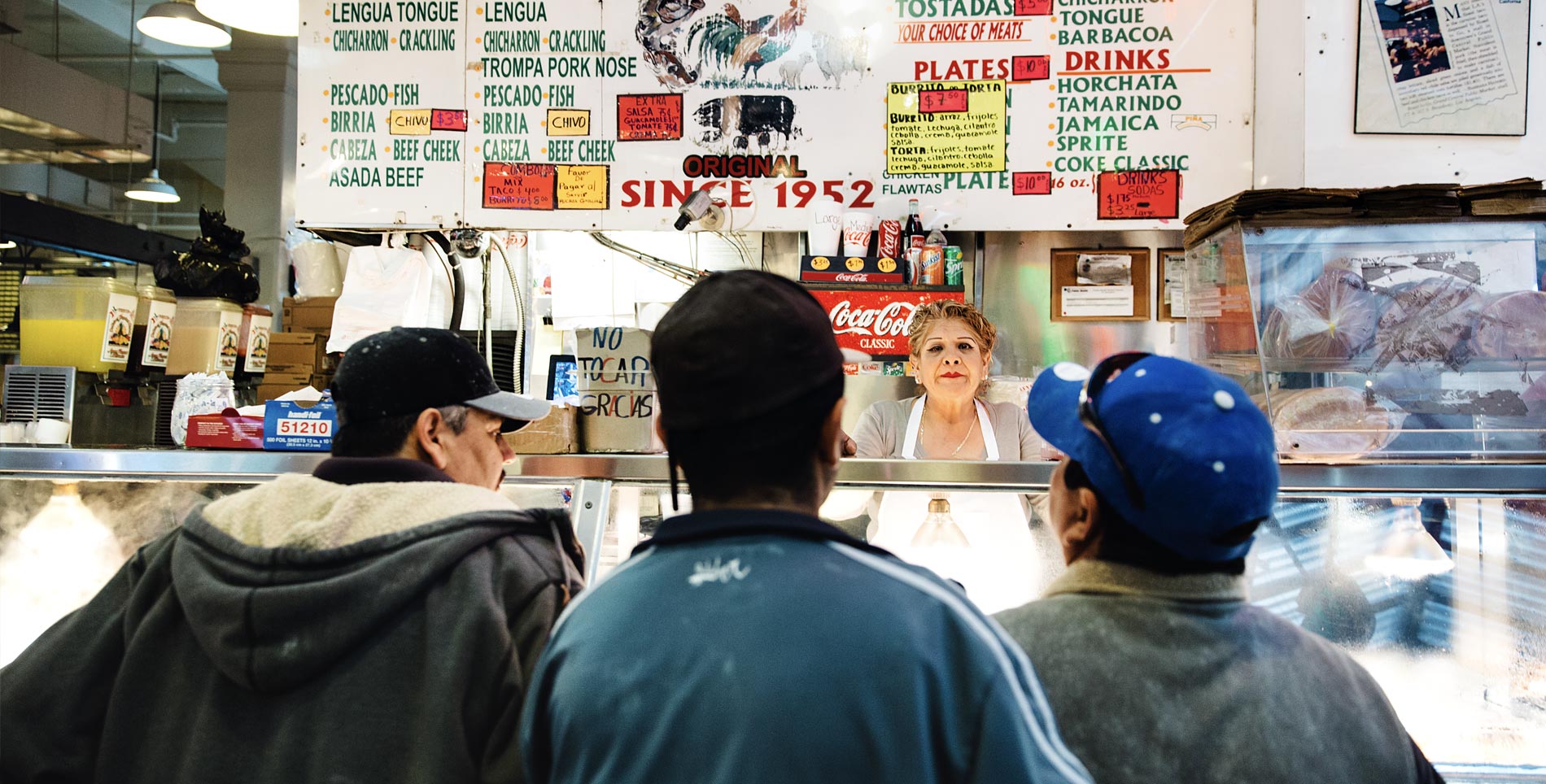

Our comments section is for members only.
Join today to gain exclusive access.